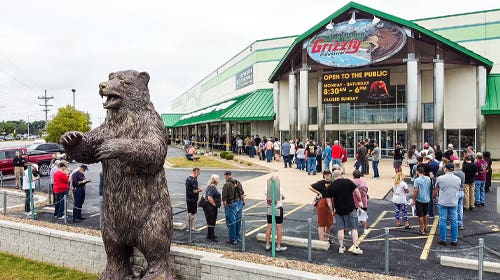Mesquite is a treasure of the Southwest
Wood is found close to water, considered extremely stable, often has incredible figure and takes an exceptional finish {loadposition position10} If you live in the Eastern portion of the country…
Wood is found close to water, considered extremely stable, often has incredible figure and takes an exceptional finish
{loadposition position10}
If you live in the Eastern portion of the country and have used mesquite, chances are it was to smoke fish. But if you reside in Texas or the Southwest, mesquite is a common wood used by furniture makers. Mesquite inhabits nearly 100 million acres in the Southwest, Texas and Mexico, where mature trees grow to 50' with a short trunk usually no larger than 20" in diameter. One dealer described mesquite as a funny tree that will grow in one direction for a few years and then change and go somewhere else.
"There are huge ranches here in west Texas where there's a lot of mesquite shrub, nothing real large," says Rudy Valdez of Acacia Hardwoods in Lubbock, Texas. "The farther south you go, the larger the trees get, but here in west Texas, where it is fairly dry without many creeks or river bottoms, we get a lot of shrubs."
"Mostly what you see here in Texas isn't really that big; they've been pushed over by farmers and ranchers for so long, you're not finding them," says Craig Fyock of Wood World Hardwoods in Dallas. "Most of the big trees are coming out of deep, deep south Texas or Mexico. Unless you are right on a river, you are not finding those big, big trees."
Mesquite (Prosopis glandulosa) is also known as algarobo, common mesquite, western honey mesquite and honey-pod. The heartwood varies from red to a chocolate-brown, while the sapwood is a lemon-yellow. The wood is dense, close-grained, very hard and heavy. The wood has a high texture, with an interlocked grain, sometimes cross-grained. Mesquite is prized for its stability, swirling grain and variance in color.
"The wood has a warm color, almost like cherry, and it has a lot of character [figure] to it," Valdez says. "The main thing about it is the stability of it. Mesquite is one of the few woods that you can use for flooring and glue it straight on concrete in solid plank flooring ... it doesn't have very much movement."
Mesquite trees are "water hogs," they consume an outrageous amount of water and their root systems can grow more than 100' down in search of water. The trees are found along creeks, riverbeds and other water sources.
"We can get some slabs and I have a couple of fireplace mantles here right now that are 4"to 6" thick; 14" to 20" wide and 8' to 10' long. You can get some big slabs of it still, but it is extremely costly," Fyock says. "It's used mostly for furniture and mantles, and I've heard of several people making cabinets out of it. It's beautiful and it's harder to work than a lot of other [woods]. You've got to be able to deal with bark inclusions and wind checks and that kind of thing. "Everybody says they have clear mesquite, but I don't think there is ever any clear mesquite, at least not in the standards of normal domestic and exotic hardwood."
"We sell to a lot to furniture makers, especially rocking-chair makers," says Bob Pew of Woods of Mission Timber in Sager, Texas. "We also sell a lot to table makers and some for countertops."
"A lot of it is used for furniture and flooring, stair parts," adds Valdez. "When we get our mesquite, it is already kiln-dried lumber. As far as the size of the logs, they can vary quite a bit. They can run 6" up to 18", 20" wide because they've already been kiln-dried."
Pew contracts for the cutting of his mesquite, which comes mainly from the areas around San Antonio and San Angelo. The logs are then transported to Woods of Mission Timber where Pew has two sawmills and two vacuum kilns. There is little time to waste, as freshly cut mesquite is quite susceptible to bug attacks.
"There are like nine different bugs that hit this thing when they cut it down," says Pew. "You can spray it with some chemicals to keep the bugs off. The best thing to do is just watch the birds; if you have birds on your logs, you've got bugs."
Once the mesquite comes out of his kiln, Pew sends it to his "bug house." He has a pesticide and insecticide license and "debugs" all of his kiln-dried lumber as an extra precaution.
Mesquite machines well, but will blunt high-speed tools such as planer knives and jointer knives. It takes an exceptional finish.
"If you're using a planer, jointer or something like that, you need to stop heavy of your cut and then sand it down from there," adds Pew. "It will chip on you because everyone doesn't run their planers at the same speed; they're not using sharp tools or they're using the wrong angle on the set of knives. Unless you're doing it all of the time, you can really mess some wood up. It takes an absolutely fabulous finish, unbelievably so."
Retail prices for 4/4 mesquite range between $10 and $14/bf; mesquite burl sells for about $30/bf.
For information on wood properties and species information, visit the U.S. Forest Service Forest Products Laboratory's Web site: www2.fpl.fs.fed.us.
This article originally appeared in the April 2010 issue.







